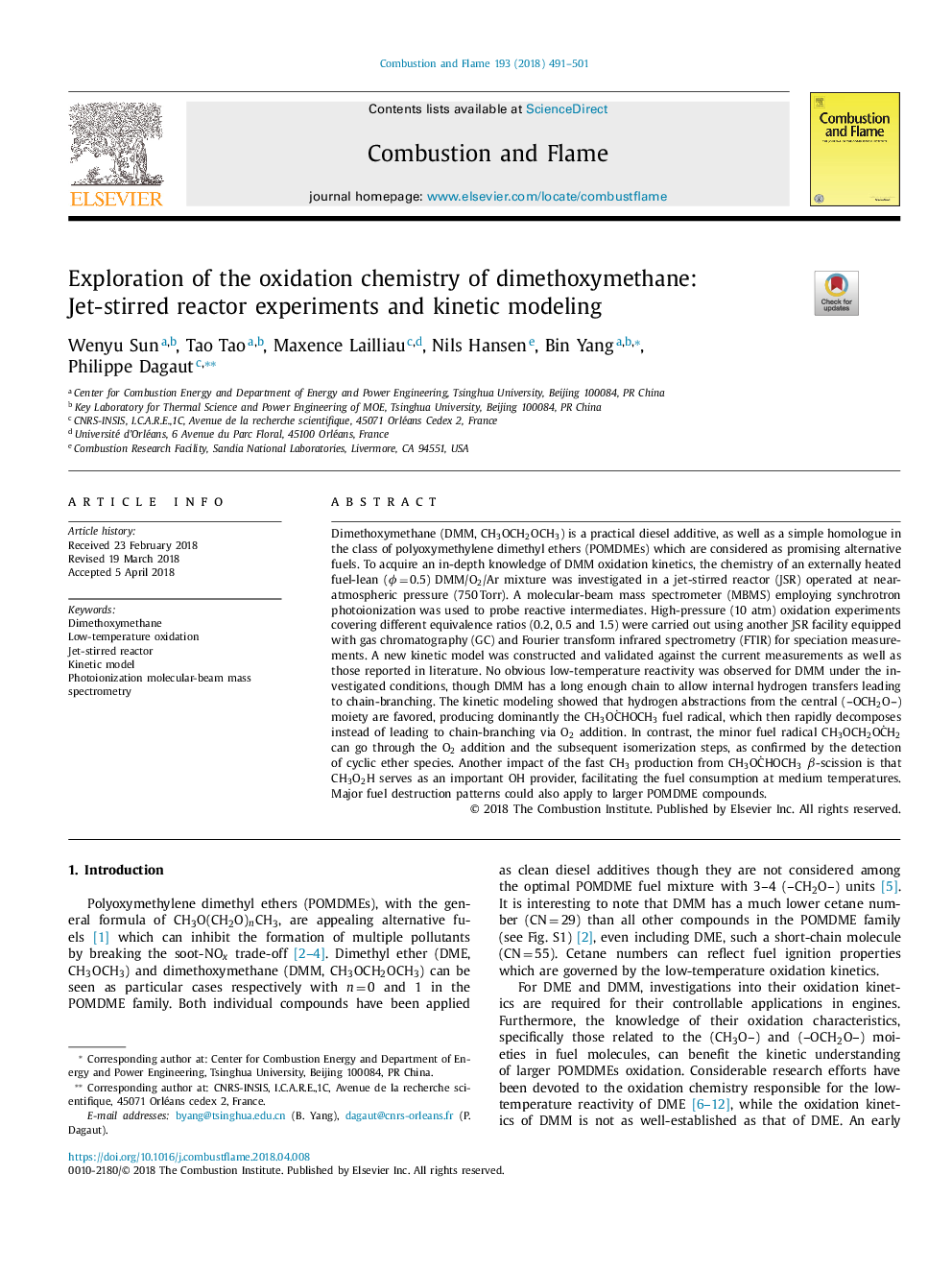| Article ID | Journal | Published Year | Pages | File Type |
|---|---|---|---|---|
| 6593618 | Combustion and Flame | 2018 | 11 Pages |
Abstract
Dimethoxymethane (DMM, CH3OCH2OCH3) is a practical diesel additive, as well as a simple homologue in the class of polyoxymethylene dimethyl ethers (POMDMEs) which are considered as promising alternative fuels. To acquire an in-depth knowledge of DMM oxidation kinetics, the chemistry of an externally heated fuel-lean (Ïâ¯=â¯0.5) DMM/O2/Ar mixture was investigated in a jet-stirred reactor (JSR) operated at near-atmospheric pressure (750â¯Torr). A molecular-beam mass spectrometer (MBMS) employing synchrotron photoionization was used to probe reactive intermediates. High-pressure (10 atm) oxidation experiments covering different equivalence ratios (0.2, 0.5 and 1.5) were carried out using another JSR facility equipped with gas chromatography (GC) and Fourier transform infrared spectrometry (FTIR) for speciation measurements. A new kinetic model was constructed and validated against the current measurements as well as those reported in literature. No obvious low-temperature reactivity was observed for DMM under the investigated conditions, though DMM has a long enough chain to allow internal hydrogen transfers leading to chain-branching. The kinetic modeling showed that hydrogen abstractions from the central (OCH2O) moiety are favored, producing dominantly the CH3OÄHOCH3 fuel radical, which then rapidly decomposes instead of leading to chain-branching via O2 addition. In contrast, the minor fuel radical CH3OCH2OÄH2 can go through the O2 addition and the subsequent isomerization steps, as confirmed by the detection of cyclic ether species. Another impact of the fast CH3 production from CH3OÄHOCH3β-scission is that CH3O2H serves as an important OH provider, facilitating the fuel consumption at medium temperatures. Major fuel destruction patterns could also apply to larger POMDME compounds.
Related Topics
Physical Sciences and Engineering
Chemical Engineering
Chemical Engineering (General)
Authors
Wenyu Sun, Tao Tao, Maxence Lailliau, Nils Hansen, Bin Yang, Philippe Dagaut,
